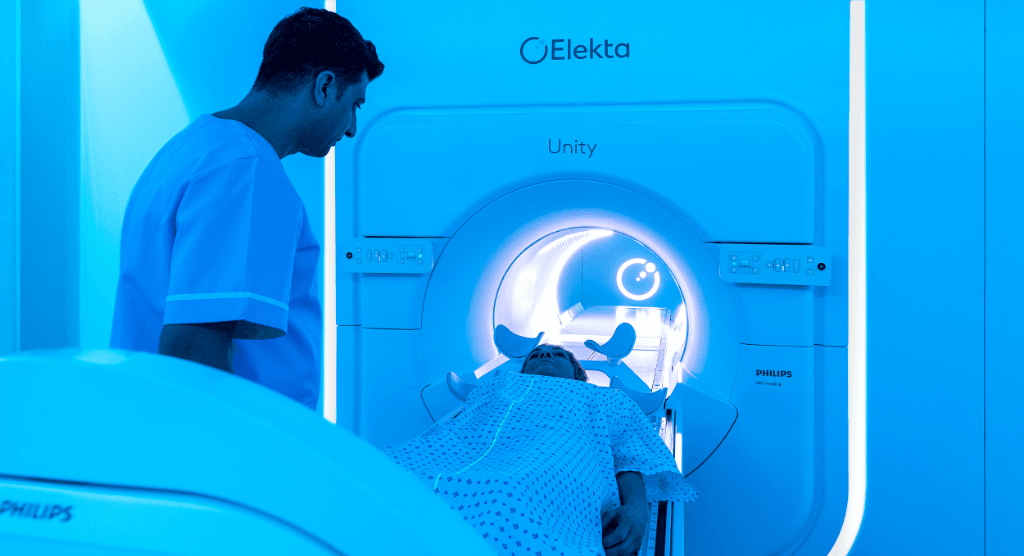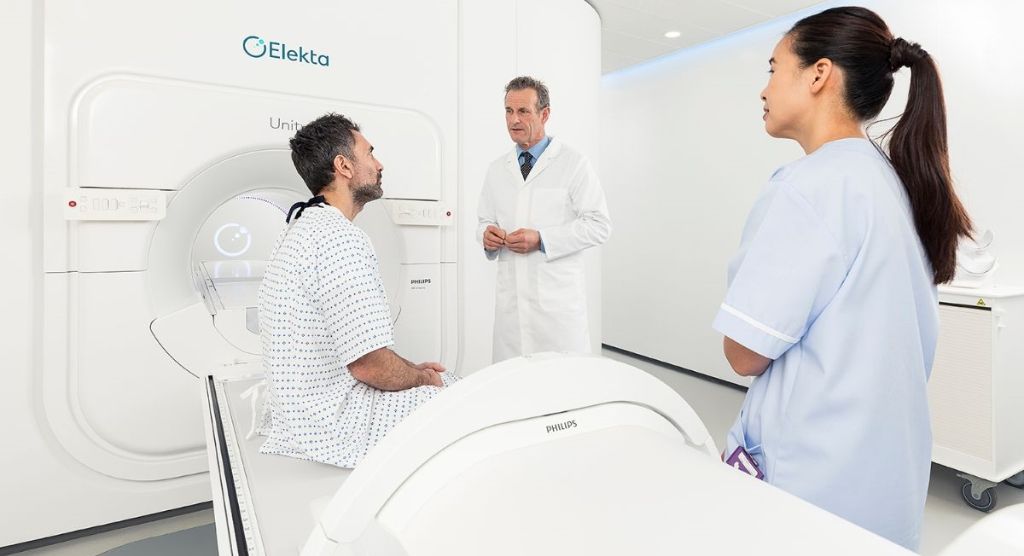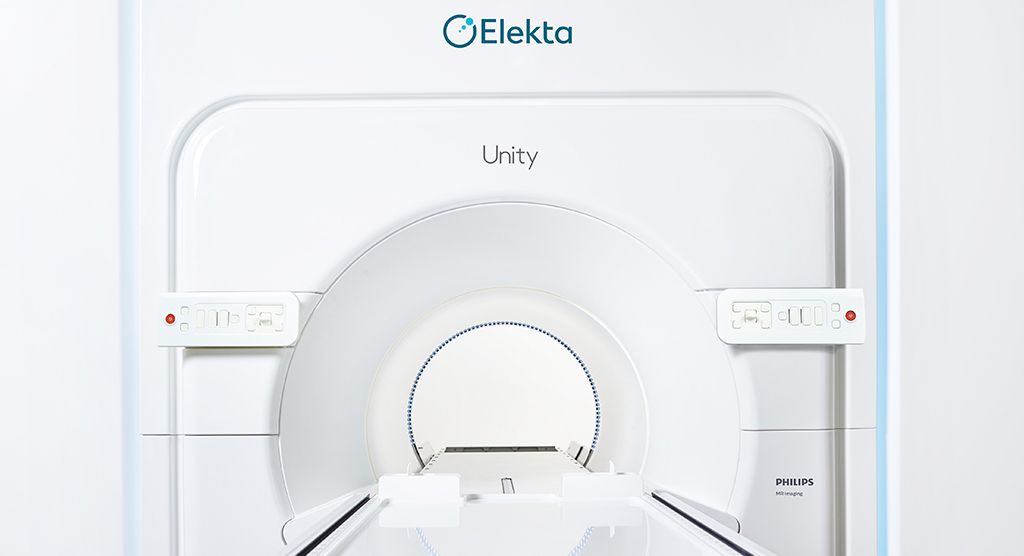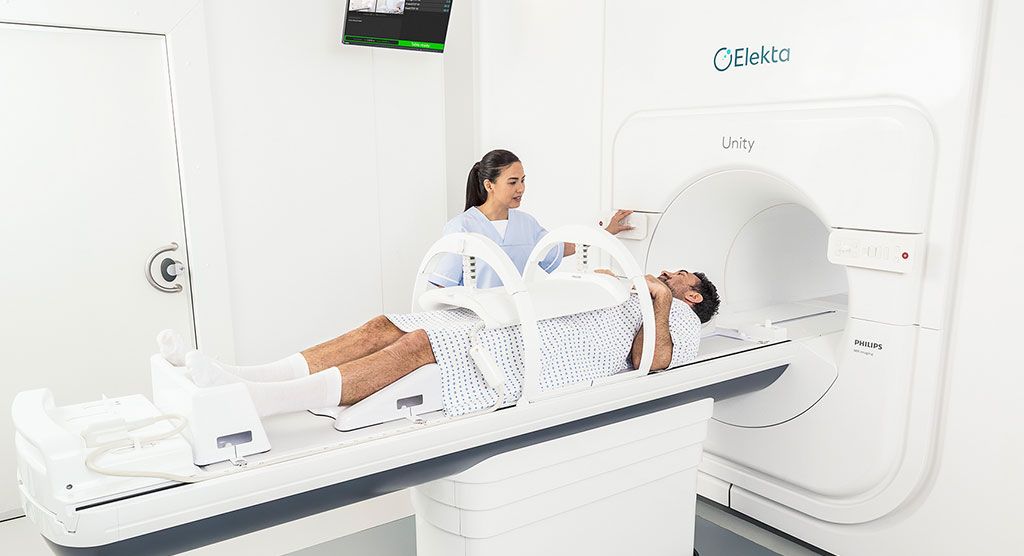Paper on first Elekta MR-Linac patient treatments earns award for most citations in physics journal
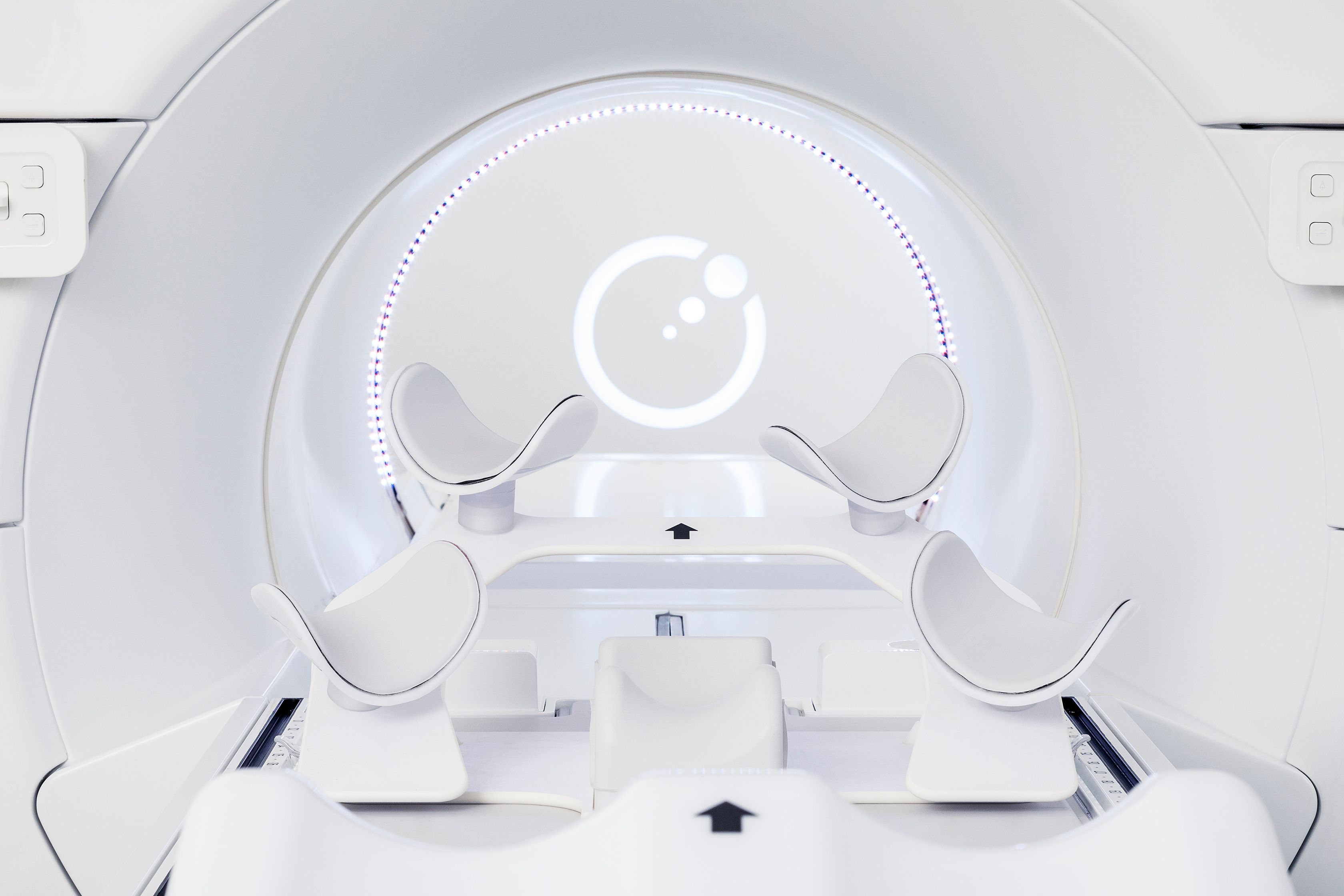
In just three years, Elekta Unity cited over 200 times in Physics in Medicine & Biology journal
The intense interest in the potential of MR-guided radiation therapy spurred researchers to cite – in great numbers in Physics in Medicine & Biology (PMB) – a paper describing the 2017 first-in-human proof-of-concept study involving the prototype of Elekta Unity, the world’s first high-field (1.5T) MR-Linac. The 217 citations of the paper: “First patients treated with a 1.5 T MRI-Linac: clinical proof of a high-precision, high-field MRI guided radiotherapy treatment,”1 earned the authors the PMB citations prize and presentation of the Rotblat Medal.
Citations, in which a paper refers to earlier works, are the means by which authors acknowledge the source of their methods, ideas and findings, and are used a measure of a paper’s significance.

In the study, researchers from University Medical Center Utrecht (UMCU) treated four patients who had lumbar spine bone mets with an IMRT plan created while the patients were on the treatment table and based on online MR images. The investigators found that absolute dose delivered was exceptionally accurate, with deviations ranging from 0.0 percent to 1.7 percent in the isocenter. Portal imaging confirmed that the accuracy of the MRI-based targeting was better than 0.5 mm, ranging from 0.2 mm to 0.4 mm.
“This paper was so widely cited because it describes the key milestone of the first patient treatments on the platform that would become our Elekta Unity system,” says Kevin Brown, Distinguished Scientist at Elekta and a co-author of the paper. “This is significant because many people thought that a high field MRI scanner and a linac could not be integrated.”
The paper demonstrated the feasibility of imaging the patient, adapting the treatment plan and delivering the treatment in a reasonable time frame. An important revelation was the system’s end-to-end accuracy at better than 0.5 mm, Brown adds.
“This is at least as accurate, if not more so, than conventional cone beam CT image guided radiotherapy,” he says. “A lot of people find this level of accuracy surprising. While they naturally expect Elekta Unity to provide far superior soft-tissue visualization via MRI, they also think that this will come at the price of reduced geometrical accuracy – which we found was not the case.”
New functionality on the way
Continually improving Elekta Unity is a priority for the company and Comprehensive Motion Management functionalities will be released soon. This innovation will facilitate radiation delivery only when the system determines the target is within user-defined tolerances. The tolerance check is completely automated and performed in real time using dual-plane cine imaging.
“This technique could allow treatment delivery to be more precise and enable users to more confidently reduce margins – permitting further reduction of the dose delivered to healthy tissues or increased dose to the target,” Brown says. “We also are investing significantly in functionality to simplify and accelerate the workflow. For example, we are investing in AI-based autosegmentation. The high-quality images allow the algorithms to produce results that our users find quite exciting.”
Many Elekta Unity users are also enthused about the prospect of using imaging biomarkers acquired on Unity to determine the individual response to treatment and to adapt the treatment accordingly, he adds.
“While this is still a work-in-progress, Elekta Unity is a perfect platform for this research and many users are routinely acquiring these imaging biomarkers as part of their patients’ treatments,” Brown observes. “These results will be analyzed with respect to patient outcomes and then be used to develop trials to demonstrate the benefits of this type of intervention. Once proven, we can deploy these techniques across the entire Unity installed base.”
Currently, 22 Elekta Unity systems are clinically operational around the world and more than 2,000 patients have been treated. The system has been used to treat over 30 different anatomical sites.
Learn more about the 2020 winners of the Rotblat Medal.
- Raaymakers BW, Jürgenliemk-Schulz IM, Bol GH, et al. First patients treated with a 1.5 T MRI-Linac: clinical proof of concept of a high-precision, high-field MRI guided radiotherapy treatment. Phys Med Biol. 2017 Nov 14;62(23):L41-L50. doi: 10.1088/1361-6560/aa9517. PMID: 29135471.
